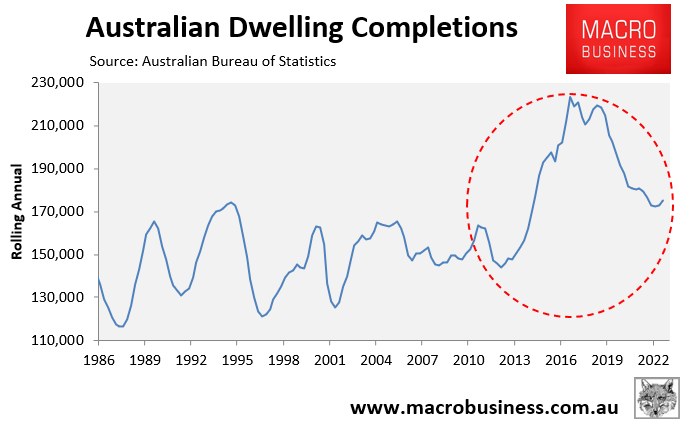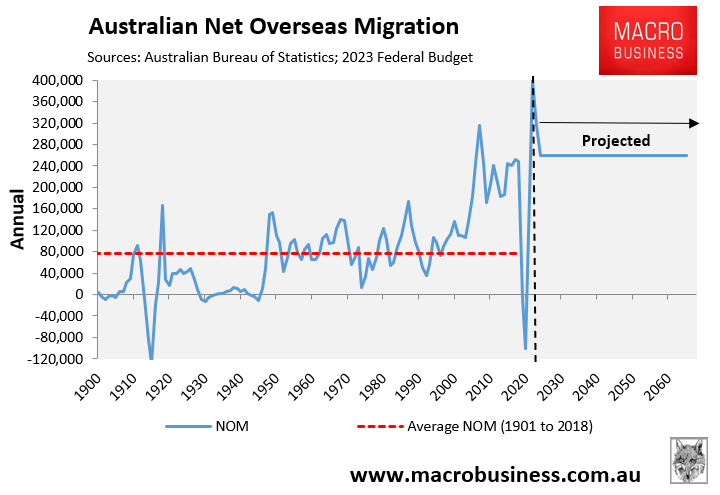Last week, the Teal independent for the wealthy Sydney electorate of Wentworth, Allegra Spender, told Sky News that current extreme levels of net overseas migration (NOM) are right and that Australia’s housing crisis has instead been caused by decades of political “inaction and failure”:
“I think that we have a strong, a good strong migration system. Fundamentally, I think our migration system is working”.
“I really support the BCA’s report on migration because migration is absolutely critical to the Australian economy”.
“Decades of political sort of inaction and failure have led us to this housing crisis”.
“There’s migration, which is really good for our economy and frankly housing inaction, where the government needs to take urgent action across the country”.
“A couple of months ago we had the lowest housing approval for a number of years. And this is a time where increasing supplies absolutely critical”.
“But frankly housing and the problems with housing are really separate”.
Over the weekend, Allegra Spender, Tweeted the federal government urging it to make funding to the states contingent on them freeing up zoning and planning rules “so we can start to find out way out of this housing nightmare”:

I agree with Spender that decades of policy “failure” have gotten us into the current “housing nightmare”.
However, this failure is not due to a lack of housing supply, but rather decades of excessive demand via extreme levels of immigration.
Take a look at the next chart, Allegra. Does it look like Australia didn’t build enough homes over the past decade? Surely not.

The problem is that this ramp-up in housing supply was dwarfed by the even larger increase in NOM from 2005:

Australia’s NOM surged from an average of 90,500 between 1991 and 2004 to an average of 219,000 between 2005 and 2019 – a 140% rise in immigration per year.
The 2021 Intergenerational Report (IGR) projected that Australia would add 13.1 million people (a 50% increase) over the next 40 years, driven by NOM of 235,000 each year.
The 2023 federal budget then upped the NOM projection to 400,000 in 2022-23, 315,000 in 2023-24, and then 260,000 each year from 2024-25 (i.e. 25,000 more than the 235,000 projected in the IGR):

Australia’s population is, therefore, now expected to grow even faster than the 13.1 million increase forecast in the 2021 IGR.
As a result, Australia will face permanent housing shortages since housing demand (via immigration) will always outstrip supply.
Growing Australia’s population by 400,000 to 500,000 people per year, as projected in the 2023 federal budget, will necessarily exacerbate housing shortages, raise rents, increase homelessness, crush-load infrastructure, and destroy liveability.
Allegra Spender’s profile extols the virtues of living in Sydney’s rich east, close to facilities and walking along the beach from Bondi to Bronte:
“My Dad’s family has been in Wentworth for generations and growing up here was incredible – swimming in the ocean, doing the Bondi to Bronte walk, cycling around Centennial Park, going to the local restaurants and cafes – and all at the doorstep of the inner city”.
“That’s why I am raising my kids here and am so passionate that we give our kids the quality of life and opportunities that I had”.
Given Spender loves extreme levels of immigration so much, I suggest we house the new arrivals in high-rise apartment towers stretching from Bondi to Bronte.
How about it Allegra? Let’s not deprive future migrant “kids the quality of life and opportunities that I had”.

